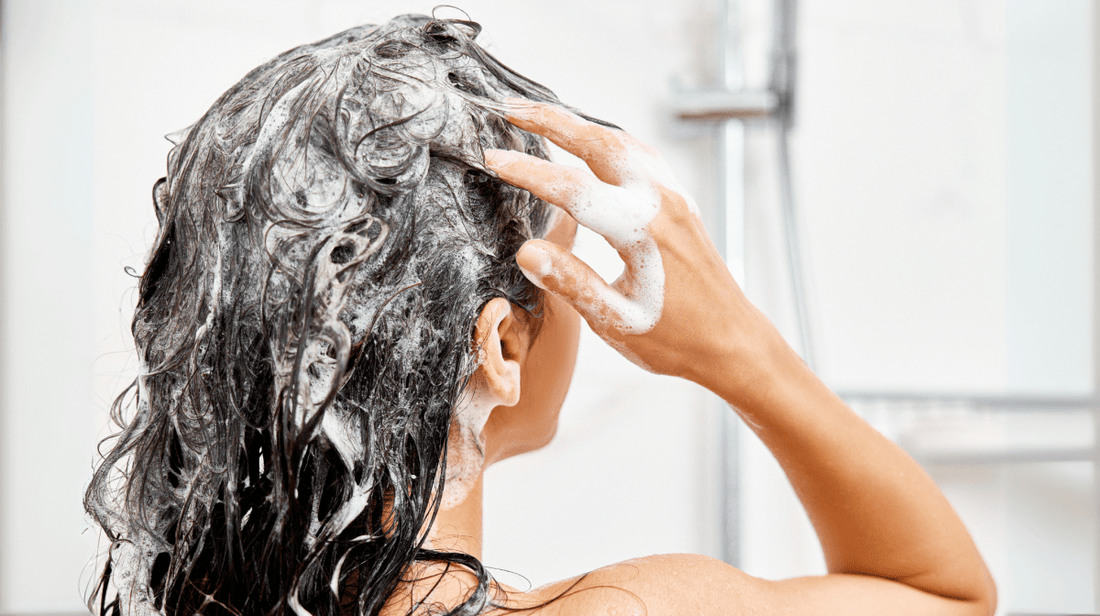
Elasticity for Healthy Hair: Why It Matters and How to Improve It
Share
That stretchiness is your hair's Elasticity, a key indicator of how healthy your hair is.
Elasticity gives your hair its body, bounce, and ability to hold its texture, whether rocking defined curls or a smooth blowout. But your Elasticity might be off-balance if your hair breaks easily feels limp, or refuses to shape.

Let's discuss Elasticity, its importance, and how to achieve (and maintain) that perfect balance for healthy, thriving hair.
What Is Hair Elasticity?
Hair elasticity measures how much your hair can stretch and return to its natural shape without breaking.
- Healthy hair: When wet, it can stretch up to 50% of its original length and snap back without breaking. Dry hair can stretch about 20%.
- Low Elasticity: Hair stretches little or not at all and tends to break easily.
- High Elasticity: Hair stretches well and returns to its natural state without damage.
Elasticity can be affected by your hair's moisture and protein balance and external factors like heat styling, chemicals, and overall care.
Why Does Your Hair Need Elasticity?
Elasticity isn't just about stretch—it's essential for the look and feel of your hair:
- Body and Bounce: High Elasticity gives your hair that natural movement and fullness we all love.
- Texture Formation: Curls, waves, and straight styles hold better when your hair has healthy Elasticity.
- Strength: Elasticity allows your hair to handle styling, brushing, and manipulation without snapping or breaking.
When your hair's Elasticity is off, it can feel brittle, mushy, or limp—and it may not hold styles the way you want it to.
How to Test Your Hair's Elasticity
To check your hair's Elasticity, take a strand of clean, damp hair and gently stretch it:
- Normal Elasticity: The strand stretches slightly and returns to its original state.
- Low Elasticity: The strand barely stretches or breaks easily.
- High Elasticity (but imbalanced): The strand stretches too much, feels gummy, or doesn't return to its shape—it's a sign your hair might be over-moisturized and needs protein.
How to Improve and Maintain Healthy Hair Elasticity
Achieving the right balance of moisture and protein is key to maintaining healthy Elasticity. Here are some tips to get you there:
1. Wash Your Hair More Often
Hydration is your hair's best friend. Regular washing keeps your strands hydrated and prevents them from becoming brittle. Use a gentle cleanser like Breewoo's Moisture Mint Cleanser to remove buildup without stripping your hair of essential moisture.
2. Moisturize and Seal
Healthy Elasticity starts with hydration. Use a lightweight, nourishing leave-in like Breewoo's Luscious Leave-In Conditioner, which is infused with aloe vera and avocado oil to lock in moisture and keep your hair feeling soft and bouncy. Seal in the hydration with a natural oil or serum like the Super Potent Hair Serum Plus for added strength and shine.
3. Balance Moisture and Protein
Too much moisture can make your hair feel gummy or mushy, while too much protein can make it brittle and prone to breakage. Pay attention to how your hair feels after conditioning. If it's overly stretchy, use a protein treatment to restore balance.
4. Protect Your Hair from Heat
High heat can damage the bonds in your hair, reducing Elasticity over time. Adjust your dryer's heat settings or air dry when possible. If you do use heat, always use a heat protectant.
5. Baggy Your Hair
Bagging involves applying a moisturizer or deep conditioner, covering your hair with a plastic cap, and letting the product work magic. This method locks in moisture, making it perfect for restoring Elasticity in dry or damaged hair.
6. Take Care of Your Scalp
A healthy scalp is the foundation of healthy hair. Massage your scalp regularly to promote circulation, and use scalp-friendly products to keep it clean and hydrated.
7. Adjust Your Diet
What you eat affects your hair. A protein-rich diet, omega-3 fatty acids, and vitamins (like biotin) support strong, elastic strands.
Healthy Elasticity: The Balance of Strength and Flexibility
Your hair's Elasticity is its ability to handle life's ups and downs—literally! When your hair stretches just enough to bounce back without breaking, you know it’s healthy and balanced.
If your hair feels brittle or gummy, take it as a sign that it needs extra care. Hydrate it, balance your protein treatments, and handle it gently. Over time, you'll notice the difference in how your hair looks, feels and behaves.
How do you take care of your hair's Elasticity? Please share your tips in the comments or tag me on Instagram @Breewoo_LLC or Facebook @Breewoo74. Let's celebrate our healthy, bouncy, thriving hair together!
